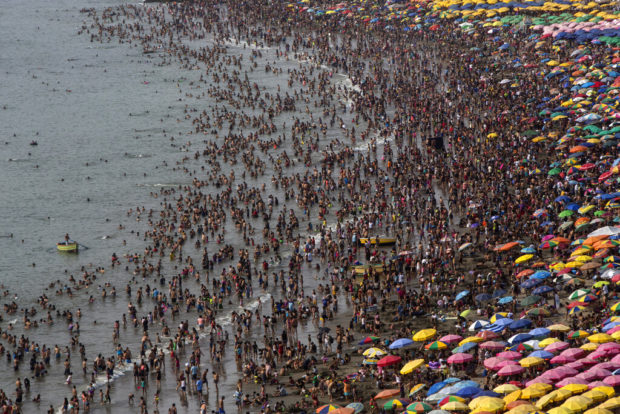
This Feb. 16, 2020 photo shows the the Agua Dulce public beach packed with thousands of beachgoers in Lima, Peru. On some weekends during the Southern Hemisphere summer, which runs from December until March, as many as 40,000 people a day visit the half-mile-long strip of Agua Dulce. AP Photo/Rodrigo Abd
LIMA, Peru — Agua Dulce beach is usually a sea of humanity, packed with as many as 40,000 people a day at the height of Peru’s Southern Hemisphere summer, which runs from December to March.
The new coronavirus pandemic has changed all that. Peru’s President Martín Vizcarra declared a state of emergency as deaths began to mount and ordered people to stay home, largely emptying the beach of people.
The half-mile-long (kilometer-long) strip of grayish-brown sand 12 miles (20 kilometers) south of central Lima is normally a haven for the working classes, a place where visitors from the Andean highlands first dip a toe in the sea.
But in recent days, an army of seabirds has claimed the sandy territory abandoned by people. Densely thronged pedestrian bridges are all but empty. Instead of chaotic human footprints, the beach is tattooed with the tracks of gulls and pelicans.
Thousands of birds flock to Agua Dulce beach now largely absent of beachgoers in Lima, Peru. The birds began swarming the empty shores since Peru’s president declared a state emergency and ordered people to stay home to help reduce the spread of COVID-19. Peru confirmed its first coronavirus case on March 6. AP Photo/Rodrigo Abd
Police officers who recently monitored the beach for unlicensed vendors catering to the crowds now walk along the empty beach to warn off would-be swimmers. Those caught out are usually let go with a warning.
Among the few defying the order was Tomas Cabrera, 86, who sat on a jetty enjoying the rare solitude.
“There are no people in the streets, no cars circulating, no factories running,” he said.